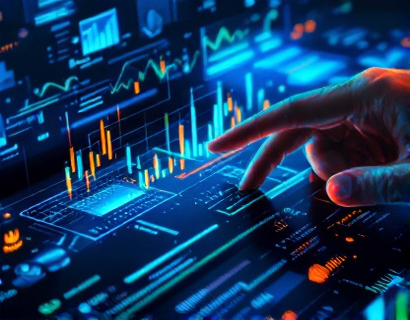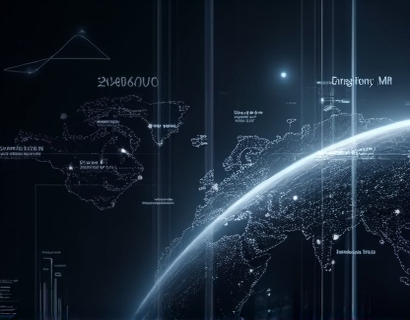Maximizing Aquaponics Business Success with Advanced Management Software
In the rapidly evolving world of sustainable agriculture, aquaponics stands out as a promising method that combines fish farming and hydroponic plant cultivation in a symbiotic environment. For aquaponics businesses, managing the intricate balance between water quality, fish health, and plant nutrition is crucial for success. Advanced management software plays a pivotal role in streamlining operations, boosting productivity, and enhancing sustainability. This article delves into how such software can transform the way aquaponics is managed, offering precise monitoring, control, and environmental stewardship.
Understanding the Challenges in Aquaponics Management
Aquaponics systems are complex ecosystems where the health of fish and plants is interdependent. Maintaining optimal conditions requires constant monitoring of parameters such as pH levels, ammonia and nitrite levels, temperature, and dissolved oxygen. Traditional management methods often rely on manual measurements and observations, which can be time-consuming and prone to human error. Advanced management software addresses these challenges by providing real-time data and automated controls, ensuring that the system remains balanced and efficient.
Key Features of Advanced Management Software
1. Real-Time Monitoring: Advanced software platforms offer continuous monitoring of critical parameters. Sensors installed in the aquaponics system transmit data to the software, which displays it in an easy-to-read format. This allows farmers to track conditions at any time, making it easier to identify and address issues promptly.
2. Automated Controls: One of the most significant advantages of advanced management software is its ability to automate system controls. Based on the data collected, the software can adjust pH levels, temperature, and water flow rates automatically. This not only saves time but also ensures that the system operates within optimal ranges, reducing the risk of crop failure or fish stress.
3. Data Analytics and Reporting: Comprehensive data analytics tools help farmers gain insights into system performance over time. By analyzing trends and patterns, farmers can make informed decisions to optimize their operations. Detailed reports can be generated to assess the health of the system, identify areas for improvement, and plan for future expansions or modifications.
4. Integration and Compatibility: Modern management software is designed to integrate seamlessly with various hardware components, including sensors, pumps, and valves. This compatibility ensures a cohesive and efficient system, where all parts work together harmoniously. Additionally, integration with other farm management tools can provide a holistic view of the entire operation.
Enhancing Productivity Through Advanced Management
By leveraging advanced management software, aquaponics businesses can significantly enhance their productivity. Here are some ways in which this is achieved:
1. Optimized Resource Usage: Automated controls ensure that resources such as water and energy are used efficiently. For instance, the software can adjust water flow based on the actual needs of the plants and fish, preventing wastage. This not only reduces costs but also minimizes the environmental footprint of the operation.
2. Increased Crop Yields: With precise monitoring and control, plants receive the exact conditions they need to thrive. This leads to healthier growth and higher yields. Similarly, fish health is maintained at optimal levels, resulting in better growth rates and higher biomass.
3. Reduced Labor Costs: Automation reduces the need for constant manual intervention, lowering labor costs. Farmers can allocate their time to more strategic tasks, such as business planning and market analysis, rather than routine monitoring.
Promoting Sustainability in Aquaponics
Sustainability is a core value in aquaponics, and advanced management software plays a crucial role in achieving this goal. Here’s how:
1. Minimized Environmental Impact: By optimizing resource usage and reducing waste, advanced management software helps minimize the environmental impact of aquaponics operations. Efficient water use, for example, ensures that this precious resource is not squandered, making the system more sustainable.
2. Energy Efficiency: Automated controls can be programmed to operate during off-peak hours or when renewable energy sources are available, further reducing the carbon footprint of the operation. This aligns with the growing demand for eco-friendly practices in agriculture.
3. Biodiversity and Ecosystem Health: By maintaining optimal conditions for both fish and plants, advanced management software promotes a healthy ecosystem. This biodiversity is essential for the long-term sustainability of the aquaponics system, as it reduces the risk of disease outbreaks and enhances overall resilience.
Case Studies and Success Stories
Several aquaponics businesses have already seen significant benefits from implementing advanced management software. For example, a medium-sized aquaponics farm in the United States reported a 30% increase in crop yields and a 25% reduction in energy consumption after integrating an advanced management system. The farm’s manager attributed these improvements to the precision and efficiency brought about by the software.
Another case in Europe showed that a small-scale aquaponics operation was able to expand its production capacity by 50% without increasing its physical footprint. The advanced software allowed the farmer to optimize water usage and nutrient delivery, leading to higher productivity and profitability.
Challenges and Considerations
While the benefits of advanced management software are clear, there are some challenges and considerations to keep in mind:
1. Initial Investment: The upfront cost of implementing advanced management software can be significant. However, the long-term savings and increased productivity often justify the investment.
2. Technical Expertise: Operating advanced software requires a certain level of technical knowledge. Farmers may need to invest in training or hire staff with the necessary skills.
3. System Compatibility: Ensuring that the software integrates smoothly with existing hardware is crucial. Compatibility issues can lead to delays and additional costs.
Future Trends in Aquaponics Management Software
The field of aquaponics management software is rapidly evolving, with several trends shaping its future:
1. Artificial Intelligence and Machine Learning: AI and machine learning algorithms can predict system behavior and optimize operations based on historical data and real-time inputs. This can lead to even more efficient and autonomous systems.
2. Internet of Things (IoT): The integration of IoT devices will further enhance real-time monitoring and control, making systems more responsive and adaptive.
3. Cloud-Based Solutions: Cloud computing allows for scalable and accessible management solutions, enabling farmers to monitor and control their systems from anywhere in the world.
Conclusion
Advanced management software is a game-changer for aquaponics businesses, offering precise monitoring, automated controls, and data-driven insights. By embracing these tools, farmers can enhance productivity, reduce costs, and promote sustainability. As the industry continues to grow, the role of technology in managing aquaponics systems will become increasingly vital. Whether you are a small-scale farmer or operating a large commercial facility, investing in advanced management software is a step towards a more successful and sustainable future in aquaponics.










































